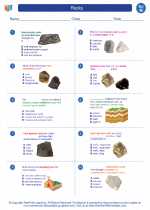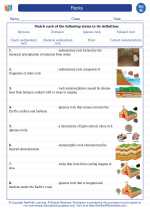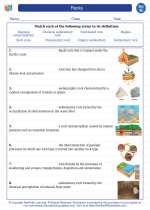Rocks -> expression
Expression in Science
In science, an expression refers to a mathematical statement that combines numbers, variables, and mathematical operations such as addition, subtraction, multiplication, division, and exponentiation. Expressions are used to represent and solve various scientific concepts and calculations.
Types of Expressions
There are several types of expressions commonly used in science:
- Numerical Expressions: These contain only numbers and mathematical operations. For example, 5 + 3 or 2 * 4.
- Variable Expressions: These contain variables (such as x, y, or z) along with numbers and mathematical operations. For example, 3x + 2y or 5z - 7.
- Algebraic Expressions: These are combinations of variables, numbers, and mathematical operations. For example, 2x^2 + 3xy - 5.
Key Concepts
When working with expressions in science, it's important to understand the following key concepts:
- Order of Operations: The rules for performing mathematical operations in the correct order (PEMDAS - Parentheses, Exponents, Multiplication and Division from left to right, Addition and Subtraction from left to right).
- Like Terms: Terms that have the same variables raised to the same powers. For example, 3x and 5x are like terms.
- Simplifying Expressions: Combining like terms and performing operations to simplify an expression to its simplest form.
Study Guide
Here are some tips for studying expressions in science:
- Understand the basic principles of mathematical operations (addition, subtraction, multiplication, division, and exponentiation).
- Practice identifying and classifying different types of expressions (numerical, variable, algebraic).
- Learn and apply the order of operations to simplify expressions correctly.
- Practice combining like terms and simplifying algebraic expressions.
- Work on solving equations and inequalities involving expressions.
By mastering the concepts and skills related to expressions, you will be better equipped to tackle various scientific problems and calculations.
[Expression] Related Worksheets and Study Guides:
.◂Science Worksheets and Study Guides Eighth Grade. Rocks
Worksheet/Answer key Rocks
Rocks  Worksheet/Answer key
Worksheet/Answer key Rocks
Rocks  Worksheet/Answer key
Worksheet/Answer key Rocks
Rocks  Vocabulary/Answer key
Vocabulary/Answer key Rocks
Rocks  Vocabulary/Answer key
Vocabulary/Answer key Rocks
Rocks  Vocabulary/Answer key
Vocabulary/Answer key Rocks
Rocks 

 Worksheet/Answer key
Worksheet/Answer key
 Worksheet/Answer key
Worksheet/Answer key
 Vocabulary/Answer key
Vocabulary/Answer key
 Vocabulary/Answer key
Vocabulary/Answer key
 Vocabulary/Answer key
Vocabulary/Answer key

The resources above cover the following skills:
Earth/Space Science: Students will use scientific skills and processes to explain the chemical and physical interactions (i.e., natural forces and cycles, transfer of energy) of the environment, Earth, and the universe that occur over time.
Earth History: Explain how sedimentary rock is formed periodically, embedding plant and animal remains and leaving a record of the sequence in which the plants and animals appeared and disappeared.
Explain how sedimentary rock buried deep enough may be reformed by pressure and heat and these reformed rock layers may be forced up again to become land surface and even mountains.